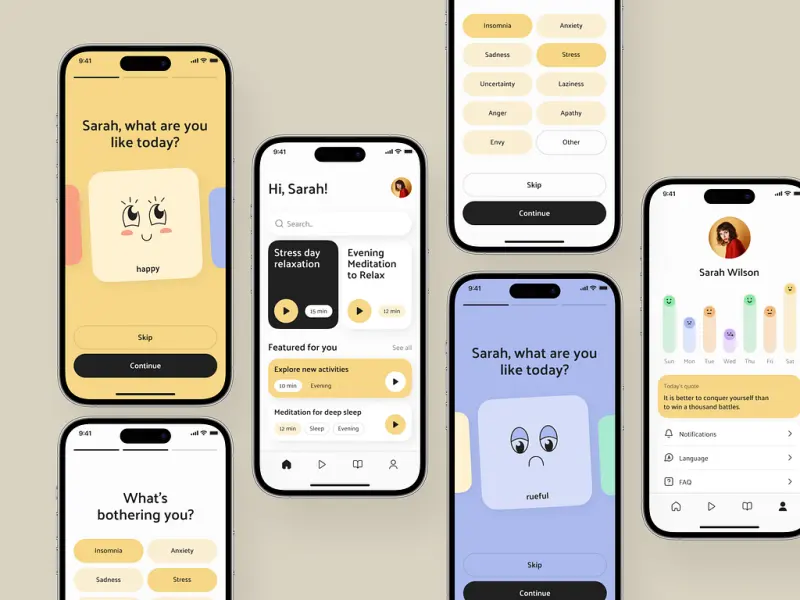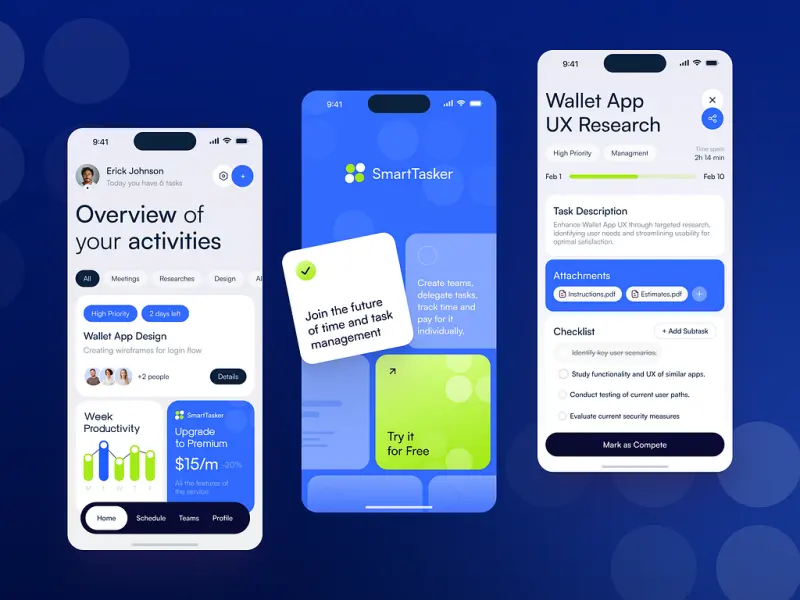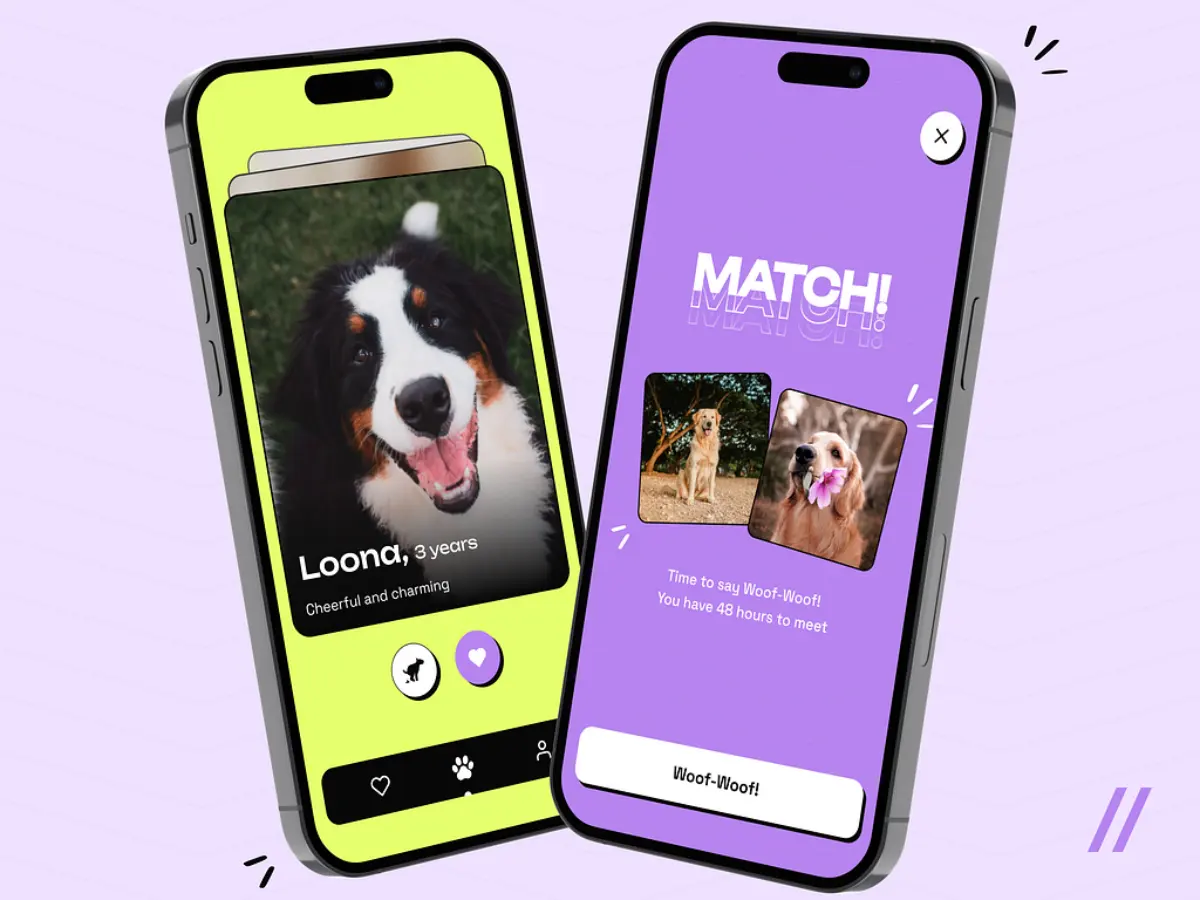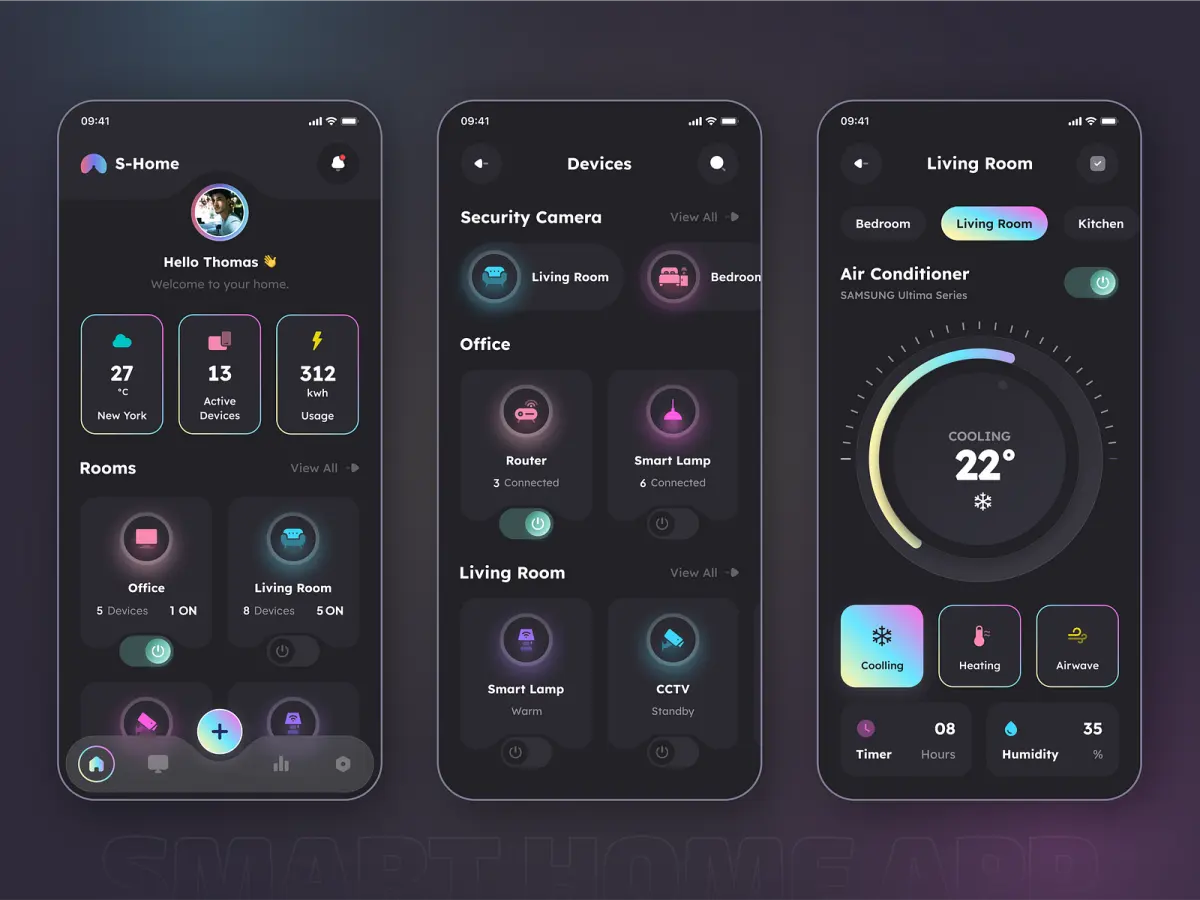Mobile App Localization: How to Expand Your App’s Global Reach
- TECHVIFY Team
- 0 Comments
From entertainment and education to transportation and business—whatever task you want to complete or information you need, chances are it’s available on your smartphone.
In 2022, users downloaded 255 billion mobile apps worldwide. And with this massive demand for content, users are increasingly looking for apps in their native language. If you want to maximize your app’s reach, language and culture shouldn’t be barriers preventing users from enjoying and benefiting from your app.
The key to expanding your app’s coverage, boosting download rates, and increasing revenue around the globe is app localization. This is a multifaceted process that involves adapting your app for different languages and cultures. To do it right, you need a sound strategy and the right tools to make the process efficient.
In this guide, we’ll explore the benefits and challenges of mobile app localization and offer tips to help you establish a future-proof localization workflow. Let’s dive in!
I. Understanding App Localization
App localization is the process of tailoring every part of your app to meet the cultural, language, and technical needs of each market you’re targeting.
This involves adapting everything from the app’s text and cultural references to its audio-visual elements and user experience (UX). But before you can start localizing, there’s an important first step called ‘internationalization.’
Mobile app localization
Internationalization, often shortened to ‘i18n,’ is the groundwork that sets your app up for localization. It separates the text and other user-facing content from the app’s code. This way, the code can be restructured to be language-neutral. Instead of hard-coding any specific language, the app will automatically pull the right text based on the user’s language settings.
Once internationalization is complete, various aspects of the app are adjusted so that users feel like the app was originally built in their own language. For instance:
- Text, like user guides, terms and conditions, FAQs, and even text inside images.
- Images and colors that reflect local culture and preferences.
- Audio, including voiceovers, music, and sound effects.
- Formats for dates, numbers, and currencies.
- Design elements, such as support for right-to-left languages or unique character sets.
However, there’s no point in localizing your app if no one is downloading it.
Publishing your app on both iOS and Android stores makes it available worldwide, but there’s a big difference between being available globally and being accessible globally.
Even if your app supports dozens of languages, localization is still critical.
II. Why App Localization Matters
Now that we’ve covered what app localization is, let’s talk about why it’s so important. Here are some key reasons why localizing your app is a smart move:
1. Drive More Downloads
According to a 2023 Statista report, “the number of smartphone mobile network subscriptions worldwide reached almost 6.4 billion in 2022, and is projected to surpass 7.7 billion by 2028.”
China, India, and the United States are the top three countries with the most smartphone mobile network subscribers.
In the third quarter of 2022, Android users had access to 3.55 million apps, making Google Play the largest app store, as reported by Statista. The Apple App Store followed with about 1.6 million apps available for iOS.
Both stores are accessible in around 40 different languages globally, meaning your app needs to differentiate yourself from competitors to convince users to hit that all-important download button.
2. Create a Customized User Experience
A global survey by CSA Research found that consumers using smartphones are far more likely to engage with a brand when the app content is in their native language:
- 65% prefer content in their own language.
- 40% won’t make a purchase in a foreign language.
- 73% prefer to read product reviews in their own language.
With only 0.5% of apps finding success, a staggering 9,999 out of 10,000 apps fail for various reasons. Low download rates and poor user retention are two major culprits. Limiting your app’s language availability won’t help you overcome these hurdles. A 2016 study by Distimo showed that companies who localized their apps for iOS experienced a 128% increase in downloads compared to those who didn’t.
People are more inclined to download and interact with apps in their native language. Localizing your app’s store listing—including the title, subtitles, descriptions, screenshots, and keywords—can significantly boost your chances of getting more downloads.
Even localizing just the keywords, which helps with app store visibility, can lead to a 767% increase in downloads.
When the app’s content is customized for the user’s cultural preferences, it creates an improved user experience, which subsequently drives greater engagement. better conversions, and more positive reviews.
3. Boost Your Revenue
In 2023, consumer spending on Android and iOS apps grew to $135 billion, according to Business of Apps.
Localization helps increase your app’s visibility, allowing it to reach new audiences in different markets.
Remember, the Apple and Google app stores don’t cover every market worldwide. Localizing your app ensures it’s ready for all types of screen sizes and operating systems across various regions.
Research shows that a well-localized app can improve your rankings in app stores, leading to more downloads and, consequently, higher revenue.
Making your app more accessible and easier to navigate for new users helps increase the number of downloads, which naturally boosts your chances of generating more revenue.
III. Different Levels of Mobile App Localization
Just like how you can choose to develop only the essential features of an app to meet the needs of a specific audience—what’s known as a Minimum Viable Product (MVP)—you can also approach app localization at varying levels.
App localization can be categorized into two primary types that you should think about, based on how much of the app you want to localize.
Mobile application localization
Minimum Viable Localization (MVL)
MVL focuses on localizing only the most important parts of the app—like core features, app store descriptions, and metadata. This kind of localization is great for early-stage app startups that want to get to market efficiently and optimize their return on investment (ROI) with minimal effort and resources.
A good example of MVL is how Evernote, the popular note-taking app, entered the Chinese market in 2012. They launched with a simplified version of their product, gave it a local-language name—Yinxiang Biji (印象笔记), which translates to “memory notes”—and provided a basic language pack.
By 2013, with 4 million Chinese users, Evernote expanded by launching Yinxiang Biji Business. This fully localized version tackled the challenge of limited network bandwidth between China and other countries by hosting app data locally within China, making the app much more efficient for Chinese users.
Full App Localization
For global companies that want to fully commit to localization and maximize their app’s reach, user base, and revenue potential, full app localization is the way to go.
With full app localization, every element of the app is adapted for each target market, including app store listings. This ensures that users in every region feel like the app was made just for them.
A prime example of full app localization is Airbnb. For each of its 220+ locales and 60+ languages, Airbnb has customized everything from the app’s user interface and content to the payment methods available. Ge Zhongjun, Airbnb’s former Language Manager, explained how this played out for the Chinese market:
They enabled Alipay and WeChat Pay, launched WeChat mini-apps, used local maps, followed the latest marketing trends in China, made it easier for Chinese hosts and guests to search for listings, and even set up servers within China. The localization of Airbnb in China was incredibly thorough, covering not just product development but also local operations, hiring, decision-making, and information sharing between the headquarters and the local office.
Airbnb’s approach is a great example of how full app localization can help a company integrate deeply into a specific market and offer a seamless experience to users.
Have a Project Idea in Mind?
Get in touch with experts for a free consultation. We’ll help you decide on next steps, explain how the development process is organized, and provide you with a free project estimate.
IV. Common Challenges And Ways to Effective App Localization
Whether you’re aiming for a global app launch or focusing on a few select markets, there are several challenges you may encounter that can slow down your progress or even cause significant problems if not addressed early.
Challenge: Unforeseen Delays and Extra Costs
It’s pretty common for app development teams to forget about localization when building an app, focusing only on the initial market and leaving localization as an afterthought.
Why it matters: This oversight can lead to serious issues down the road when you try to expand into new markets. You might find yourself facing delays and additional costs because the app wasn’t designed with localization in mind from the beginning, making it hard or expensive to adapt later.
How to solve: Thinking about global readiness from the start
To avoid these costly delays, it’s crucial to plan for internationalization early in the development process. By designing your app to support multiple languages and regions from the outset, you’ll be in a much better position to handle localization efficiently when the time comes. Automating and centralizing parts of the localization process can also help reduce manual work and speed things up, but only if the app was built with localization in mind from the beginning.
Mobile application visualize
Challenge: Quality Issues Detected at App Release
Many apps get released only to discover that localization errors—like mistranslated app strings or confusing text—make the app frustrating or even unusable for users.
Why it matters: Problems like this can hurt your app’s reputation, lead to user drop-off, and even result in bad reviews. These localization mistakes can be costly, both in terms of lost users and the resources required to fix the issues post-launch.
How to solve: Testing localization quality before launch
To avoid these headaches, it’s important to invest in thorough testing and quality assurance for all the languages you’re localizing. If you can’t test every single element—like strings, layouts, and date formats—consider using pseudolocalization. This technique replaces all localizable UI elements with a pseudo-language to help identify potential issues before the actual translation process begins.
There are several pseudolocalization tools available that can help you check for usability, readability, and space requirements. GitHub is a good place to start if you need tools that integrate with your project.
Challenge: Localization Lags Behind Development
When app localization is treated as a separate process outside the agile development workflow, it often can’t keep pace with the app’s development cycle.
Why it matters: Delays in localization can push back your app’s release date, increasing costs and holding up the development of new features. Additionally, if communication between developers, translators, and other stakeholders breaks down, it can lead to productivity and quality issues.
How to solve: Integrating localization into your development process
To prevent localization from slowing down your app’s release, it’s best to integrate localization directly into your agile development process. This means treating localization as a continuous task that happens alongside development, rather than as a separate phase.
By including localizers in the development team from the beginning, you can make sure that everyone is aligned. Regular feedback loops between developers and translators will help you catch issues early and make sure the app is localized correctly from the get-go. In this way, localization becomes a seamless part of the development process, allowing you to release a fully localized app right out of the box.
Challenge: Inadequate Localization Technology
Many of the challenges that arise during app localization can be avoided by using the right technology.
Why it matters: Without proper tools, your localization workflow can become bogged down with inefficiencies. Developers may waste time hunting for app strings, translation requests get lost in long email chains, and app releases are delayed due to bottlenecks in the process. This not only slows everything down but also increases the chances of mistakes slipping through.
How to solve: Using a dedicated app localization platform
A solid app localization platform can make all the difference. These platforms are built with developers, product teams, and translators in mind, making it easy to manage localization efforts from a single workspace. With features like automated app string data collection, centralized task management, and integration with development tools, these platforms can streamline the entire process. They also help ensure that notifications and updates get pushed out automatically, reducing the risk of missed tasks and improving overall localization quality.
By making localization as seamless as possible, you can avoid the typical roadblocks and ensure your app is ready for users in any market.
V. Tips for Mobile Application Localization
Localization might seem like something you can tackle later, but that’s far from the truth. In fact, that’s our top tip.
1. Start Early in Development
Keep localization in mind from the initial stages of app development.
Since different languages behave and display differently on mobile screens, design an interface that’s flexible enough to support languages other than English right from the beginning. Use default resources that allow for easy adaptation.
This early consideration will simplify the translation and localization process later on.
2. Go Beyond Translation
Localization isn’t just about translating text. It’s about adapting the entire app experience—everything from images and colors to fonts and layouts.
To localize effectively, you need to integrate each element into the target culture. Being aware of regional habits and traditions helps make your app feel more natural and relatable to your users.
3. Consider Name Format Variations
People around the world input their names in different ways, and your app should account for this.
For example:
- English-speaking countries: Given name + Surname
- Spanish-speaking countries: Given name + Paternal surname + Maternal surname
- Portuguese-speaking countries: Given name + Maternal surname + Paternal surname
- Hungary, Japan, Korea: Surname + Given name
While a single input field might seem easier, it depends on your CRM needs and the type of information you’re collecting.
4. Account for Complex Pluralization Rules
Pluralizing in English is pretty simple—just add -s or -es to a noun. But other languages are more complex. For instance, in German:
- Add -e for most single-syllable nouns (except in the dative case, which uses -en).
- Add -er for many masculine or neuter nouns (but use -ern in the dative case).
- Feminine nouns often take -n or -en for pluralization.
- Foreign-origin words might take an -s (with possible umlaut changes).
And that’s just German! To handle this, create flexible messages that incorporate variable elements, allowing for different pluralization rules based on each language’s requirements.
5. Avoid Text in Images
If your images contain text, it will complicate your localization efforts. Text embedded in images can’t be easily translated, which undermines the rest of your localization strategy.
Ideally, localize all images for each region. If that’s not feasible, design your app so you can easily show or hide images as needed.
6. Test Localization Thoroughly
Localization testing is crucial and should cover a variety of devices with varying screen dimensions, especially those popular in your target regions.
Before diving into localization, many experts recommend a pseudo-localization test. This test ensures the app is properly internationalized and ready for localization.
Taking a local app global requires careful attention to detail, but doing it right will help your app succeed across national and linguistic borders.
7. Work with a Localization Provider
Localization is no small task, and that’s why many developers turn to professional services for help.
A good localization provider will do more than just translate your app—they’ll also help with internationalization and localization, while offering strategic insights based on their experience. This can lead to improvements in your app’s overall performance and user experience.
Working with a provider ensures that your app is localized effectively, saving you time and effort while maximizing your app’s global reach.
Conclusion
Localizing your app is no longer an option—it’s a necessity in today’s global mobile market. By adapting your app to different languages and cultures, you expand your reach, enhance user experience, and increase your chances of long-term success. Whether you’re looking to increase downloads, improve engagement, or boost revenue, localization is a crucial step to take.
At TECHVIFY, we understand the complexities of app localization and can help you navigate the entire process efficiently. From internationalization to full localization, our team works closely with you to ensure your app is not only accessible but also optimized for global markets.
Contact TECHVIFY today for a free consultation and see how we can help you localize and develop your app for success worldwide. We’re here to make the process seamless and tailored to your needs.
TECHVIFY – Global AI & Software Solutions Company
For MVPs and Market Leaders: TECHVIFY prioritizes results, not just deliverables. Reduce time to market & see ROI early with high-performing Teams & Software Solutions.
- Email: [email protected]
- Phone: (+84)24.77762.666








